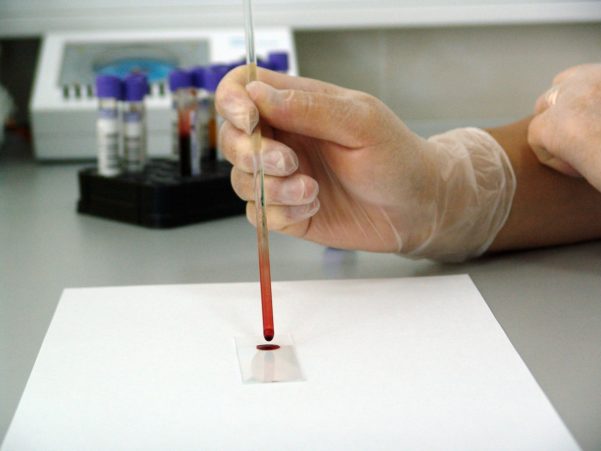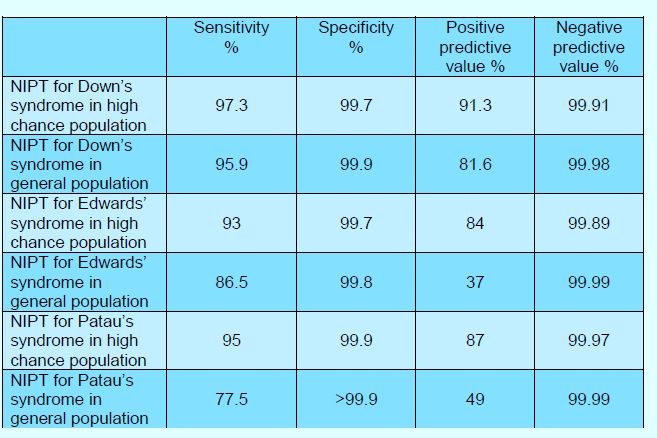Whether you are pro-life or pro-choice you will want couples to receive accurate information about the health of the baby they are expecting. A terrible case that occurred in Holles Street earlier this year shows that some of these tests are not as accurate as advertised. In this instance, a chromosomal abnormality was detected where there was none.
So-called NIPT (Non-Invasive Prenatal Tests) are used to detect foetal conditions such as Down Syndrome, Edwards Syndrome or Patau Syndrome (trisomy 21, 18 and 13 respectively).
Last month, the UK Advertising Standard Authority (ASA) ruled that a number of ads for some of those tests run by clinics in the UK were misleading as they claimed to be accurate in about 99% of cases. This is commonly understood to mean that when there is a ‘positive’ result, i.e. when the test indicates that a certain condition is highly likely to be present, this result is correct in about 99 out of 100 tests.
But this is misleading, as the ASA pointed out. In more cases than the average person might be led to believe, the result is wrong. (See footnote for a more technical explanation)
The ASA ruling found that when false positives are taken into consideration, a much smaller proportion of foetuses are found to have an abnormality. For instance, in the general population prenatal tests were correctly predictive at 81.6 pc for Down Syndrome, 37 pc for Edwards Syndrome and 49 pc for Patau Syndrome. (These are called Positive Predictive Values).
An 81.6 pc accuracy rate for Down Syndrome may sound high, but it still means that in almost 20 pc of cases when a couple do not wait for a further test, a baby without that condition will be aborted.
As we have seen, the situation is much worse for Edwards Syndrome. Three out of five babies are actually healthy even if the screening test says the opposite.
The Advertising Standard Authority ruled in respect of one ad: “We considered that the detection rates in the ad were therefore likely to mislead consumers regarding the accuracy of a positive NIPT result. Because consumers were likely to understand from the ad that the detection rate signified the likelihood that the foetus would have the relevant condition in the event of a ‘positive result’, when that was not the case, we concluded that the ad was misleading.”
The ASA told the companies to “avoid using the detection rate figure or alternatively, if referencing the detection rate, to quote robust Positive Predictive Values (based on adequate evidence) alongside an accompanying explanation of both figures.”
It reached the same ruling for two other ads, namely that they misleadingly exaggerated the accuracy of the test.
We had a look at similar ads for NIPT offered by clinics attached to the three maternity hospitals in Dublin.
Here they are from the Rotunda Private, Coombe Fetal Medicine and the Merrion Fetal Health clinic at the National Maternity Hospital.
Crucially, none of them mention Positive Predictive Values which gives the best indication of how accurate these tests are.
What would the Advertising Standard Authority in the UK think of these ads? What would our advertising authority think, if asked? Does our Health Minister, Simon Harris have an opinion? Giving couples full information in these cases can be a literal life or death decision. The stakes couldn’t be higher.
—–
In 2017, the Nuffield Council on Bioethics produced a comprehensive report on NIPT. This is how they explain the accuracy of those tests:
“The background chance of the conditions occurring affects how well NIPT predicts whether or not a fetus has Down’s, Edwards’ or Patau’s syndromes in a particular situation. For example, in women who have at least a 1 in 150 (0.67 per cent) chance of having a fetus with Down’s syndrome determined from combined screening, and then a high chance NIPT result, approximately 91 per cent will go on to receive a confirmed diagnosis. In a population of women who have a positive NIPT result without prior screening, this proportion is lower, at approximately 82 per cent. This means that among 500 such women who have a high chance NIPT result, 90 will not have a fetus with Down’s syndrome. NIPT has been found to be less accurate in twin pregnancies: the sensitivity of NIPT in twin pregnancies is suggested to be 8.3 per cent (8 in 100 cases) lower than in singleton pregnancies. Box 1.3 provides the latest performance data for NIPT for Down’s, Edwards and Patau’s syndromes in different populations
(Box 1.3)
A systematic review of clinical studies on the performance of NIPT for Down’s, Edwards and Patau’s syndromes was published in 2016 by Warwick Evidence. The 41 studies included in the review were mainly carried out by commercial companies and some involved more than 100,000 pregnant women. The review looked at the performance of NIPT both in women with an increased prior chance of carrying a fetus with one of the conditions (which was defined in different ways in the studies included in the review) and in the general population of pregnant women.
– Sensitivity is what proportion of affected cases will be identified as screen-positive by the test.
– Specificity is what proportion of unaffected cases will be identified as screen-negative by the test.
– Positive predictive value is what proportion of the screen-positive cases are in fact affected.
– Negative predictive value is what proportion of the screen-negative cases are in fact unaffected.”


















